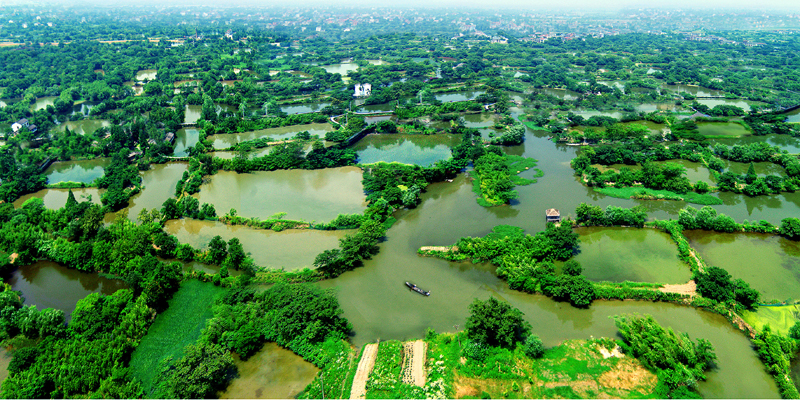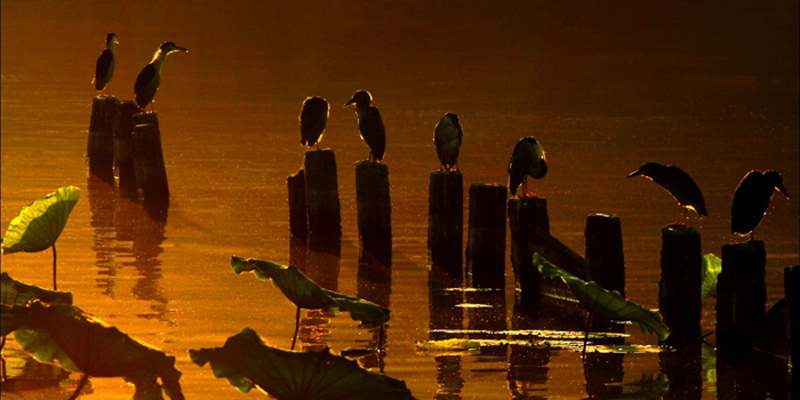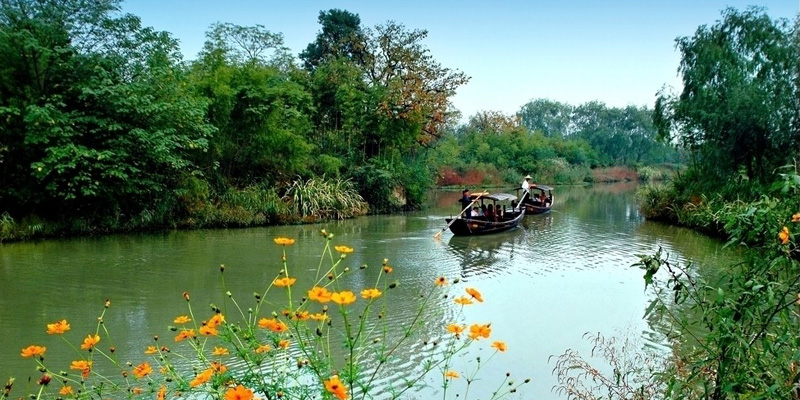Xixi National Wetland Park is well known as the "Three Xi’s (West) of Hangzhou" (short for the three landmark attractions in Hangzhou) along with West Lake (Xihu), and Xiling Seal-Engravers' Society. Covering an area of 10.08 square kilometers, Xixi National Wetland Park is located in the west of Hangzhou, less than 5 kilometers away from West Lake. It is China’s first and only national wetland park, which combines urban wetland, farming wetland and cultural wetland.
Water is the soul of the Xixi National Wetland Park. About seventy percent of the area is covered with water, which creates a special habitat for various species of flora and fauna. Six creeks crisscross the park, among which scatter various other creeks, ponds, lakes and swamps with water birds flying about above them and fish swimming freely in them. Reed catkins in the autumn and plum blossoms in winter are also its highlights.
Xixi National Wetland Park has a history of more than 1,800 years: it was first discovered in the Eastern Jin Dynasty (317–420), flourished during the dynasties of Ming (1368–1644 AD) and Qing (1644–1912 AD), declined during the Republican Period, and revived in modern times. Abundant cultural heritages accumulated during this period such as, Yue Opera (越剧), Dragon Boat Racing, and water village-style life featuring silkworm feeding and silk production etc.
Also because of its features like peacefulness, primitiveness, and undisturbedness, the park was regarded as a pure land on Earth by many literati. And it remained a favorite haunt for them. These literati left behind many works of art as well as footprints, which in turn provide a profound culture flavor to enhance Xixi National Wetland Park.
Misty Water Fishing Village (烟水渔庄)With mist and water merging into one in this village, Misty Water Fishing Village creates a unique scene you cannot find elsewhere. Misty Water Fishing Village is called “Yanshui Yuzhuang” in Chinese. "Yanshui" means a lot more than misty water. It is far more poetic and picturesque: you can enjoy the misty beauty of the pond (which is in front of the village), which is enveloped in mists. You can see cooking smoke curling up and you can also find misty willows all around.
Autumn Snow Temple (秋雪庵)Autumn Snow Temple lies in a solitary islet in the center of the wetland. It was built in the Song Dynasty (960–1279 AD). Nowadays, the temple is the core part of the “Eight Scenes in Autumn Snow”. This tranquil spot, hemmed in by water, is only accessible by boat.
Manor Anchored in Water (泊庵)This manor can be traced back to the Ming Dynasty (1368–1644 AD), when Xixi Wetland was overgrown with reeds. Viewed from a far high spot, the entire manor looks like a thatched house being anchored in the water, which means “bo (泊)” in Chinese. Hence its Chinese name is Bo Manor.
Plum and Bamboo Villa (梅竹山庄)
Plum and Bamboo Villa is endowed with a mass of green. Built in the Qing Dynasty (1644–1912 AD), it is known for its old plum trees and thin and long bamboos growing all around.
Xixi Plum Houses (西溪梅墅)
Located in the southeast part of the park, Xixi Plum Houses, together with Plum and Bamboo Villa, Xixi Thatched House, and Xixi Waterside Pavilion, constitute the main contents of the plum and bamboo leisure area.
Xixi Waterside Villas (西溪水阁)Xixi Waterside Villas is a place where ancient scholars kept and read books or met friends. It consists of two groups of villa-styled buildings: the eastern one is Book Tower (拥书楼) and the western one is Blue Stream Book House (蓝溪书屋).
Xixi Thatched House (西溪草堂)Xixi Thatched House was the private residence of the noted writer of the Ming Dynasty, Feng Mengzhen (冯梦桢) who was good at composing poetry and collecting antiques.




